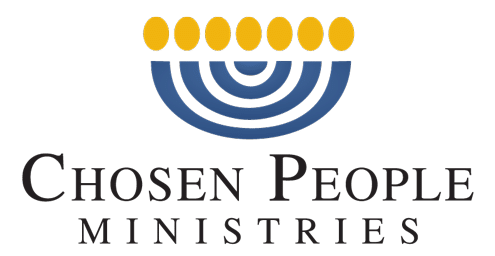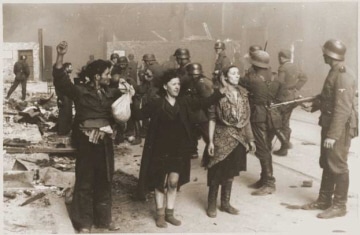The following is an excerpt from Mitch Glaser’s recent presentation entitled, “Heroes of the Holocaust: Poland, the Warsaw Ghetto and Yeshua,” given at a gathering of leaders in Jewish missions.
The Holocaust was the most significant challenge to the survival of the Jewish people since the Babylonian Captivity. Over the centuries, many threats reshaped the Jewish community, including the Crusades, expulsions, pogroms and the ongoing conflicts related to the modern State of Israel. Yet no other modern trauma brought upon the Jewish people is comparable to the reduction of the Jewish population and destruction of Jewish life engendered by the Holocaust.
The impact of this tragedy on the general Jewish population was massive, as was its impact on Jewish followers of Jesus. Jewish believers living in Europe prior to the Holocaust numbered in the hundreds of thousands. Most were either killed or moved to other parts of the globe. Even after over seventy years, we still live in the shadow of the Holocaust, and the experiences of our spiritual forefathers during the Holocaust continue to shape Jewish missions.
We stand on the shoulders of these heroes of the Holocaust, particularly the Jewish believers of the Warsaw Ghetto, although their achievements and witness remain largely unknown. Their story — as much or as little as we know — must be told.
The Nazi Invasion and the Construction of the Warsaw Ghetto
The Nazis invaded Poland in 1939 and anti-Jewish regulations were soon implemented, leading to the construction of the Warsaw Ghetto. The Nazis also built ghettos in other Polish and Lithuanian cities with large Jewish populations, such as Lodz and Vilna.
The Nazis established the Warsaw Ghetto in November 1940. They placed nearly 500,000 Jewish people within the Ghetto and imprisoned them with a wall. In 1941, about 45,000 Jewish residents died due to overcrowding, forced labor, poor sanitation, scarce food, and disease. In 1942, the Nazis deported most of the Ghetto’s population to Treblinka, one of six death camps, leaving only 60,000 residents. The following year, in April 1943, the Germans attempted to raze the Ghetto and deport the remaining population to Treblinka, initiating an uprising, led by Mordecai Anielewicz. The bitter fighting lasted twenty-eight days, ending with the Ghetto’s destruction.1
An Overview of Pre-War Jewish Missions in Poland
Martin Parsons, a missionary to the Jewish people with The Church’s Ministry among Jewish People (established in 1809) gives a sketch of Jewish missions in Warsaw in a statement prior to the Nazi invasion:
The American Board of Missions to the Jews [Chosen People Ministries today] has a center in Warsaw on the east of the river. They have room for some inquirers, in addition to general evangelistic work. The Mildmay Mission (Messianic Testimony today) has a hall in the Jewish quarter in Warsaw and their work mainly touches poorer Jews. The American-European Fellowship is in Warsaw and works particularly among children. They have a villa at Radoso, which is used in the summer for children’s work. The Bethel Mission in Lodz has an evangelistic center and a colony. In addition, in Poland there is one Pentecostal evangelist, one member of the Open Brethren, one member of the Closed Brethren and a few private evangelists living by faith. The four missions in Warsaw work together in close cooperation.2
Parsons’ organization, CMJ, built Emmanuel Hall in 1927, a showcase for Messianic believers in Warsaw. Three Jewish believers provided significant leadership in Poland: H. C. Carpenter, Paul Levertoff, and J. I. Landsmann. Martin Parsons took the helm in 1927 and led the work until the Nazi invasion. Many effective missionaries served with CMJ, such as Bazyli Jocz, father of Messianic scholar Jakób Jocz.
Jewish Believers in the Warsaw Ghetto
When the Nazis invaded Poland, conditions among the Jews were already terrible, but the Final Solution arrived in Poland like a raging storm from hell. Jews and missionaries to the Jews were rounded up and taken to concentration camps, or else killed outright. Chaos was everywhere, and the work of the missions ground to a complete halt from which it would never recover.
Missions to the Jews died in Poland along with approximately 3,000,000 Jewish people. The largest of the open and active fields of labor among the Jewish people for the Gospel was destroyed; the war marked the end of a people and the end of an era.
In his monumental book, Christians in the Warsaw Ghetto, Peter F. Dembowski calculates that there were 5,000 to 6,000 Jewish believers living in the Ghetto at its height.3
Rachmiel Fryland speaks of his own interaction with the remaining believers in the Ghetto:
In late 1944, by hiding in cemeteries, deserted churches, and the homes of fearful friends, I was one of the few surviving Jews in Warsaw outside the ghetto. In that enclosure were 5,000 Jews, the last of Warsaw’s original 500,000. By God’s enabling, I secretly slipped into the ghetto and was able to speak comfort to a few of the Jewish believers still alive. Other Jewish brethren heard the message and believed in Messiah Jesus.4
Frydland was one of the most well-known Messianic Jewish survivors of the Holocaust. His first-hand testimony provided information about the life of the Jewish believers in Warsaw before and, to some degree, during the war.
One of the most significant Jewish believing voices was that of Dr. Ludwick Hirszfeld, author of the book The Story of a Life. Dembowski says, “Herzfeld (sic) is the most knowledgeable informant about the Ghetto and many aspects of the daily life of the Ghetto dwellers.”5
Dr. Hirszfeld’s autobiography, written soon after his escape from the Ghetto, gives a detailed description of his life and that of others, as well as providing testimony of his faith. He was a well-respected scientist who had served as a medical doctor in the Polish army in Yugoslavia. There, he began his lifetime work of developing methodology to identify blood types, which scientists still use today. Hirszfeld became a believer in his twenties, and the vitality of his faith comes through in both his writings and actions.
According to the records of various Jewish missions and churches, there were many conversions preceding the Holocaust. These continued all the way until the destruction of the Ghetto. Warsaw, a hotbed of Messianic activity, was home to more than a dozen Jewish missions.
The believers who came to faith through the Jewish mission agencies and Evangelical churches before and during the Ghetto counted the cost. These true believers found comfort in their dire straits through the Messiah.
While we do not have many records of their voices, one day we will hear their stories of martyrdom and suffering. In the eternal kingdom, their voices will be lifted with ours in praise and worship to the One who suffered on our behalf and was raised in triumph, conquering death, evil and every enemy of God and His chosen people. The grace of our Messiah and Lord will wipe away the horror of the Ghetto.
Sources:
1 The Teacher’s Guide to the Holocaust: https://fcit.usf.edu/holocaust/timeline/ghettos.htm
2 IMCCAJ Vienna Conference 1937
3 Peter Dembowski, Christians in the Warsaw Ghetto: An Epitaph for the Unremembered, (Notre Dame: University of Notre Dame Press, 2005) 68.
4 https://www.messianicassociation.org/bio-frydland.htm
5 Dembowski, 114.




Inside Israel – April 25, 2023
Heroes of the Holocaust: Poland, the Warsaw Ghetto, and Yeshua
Celebrating our Deliverance in the Messiah